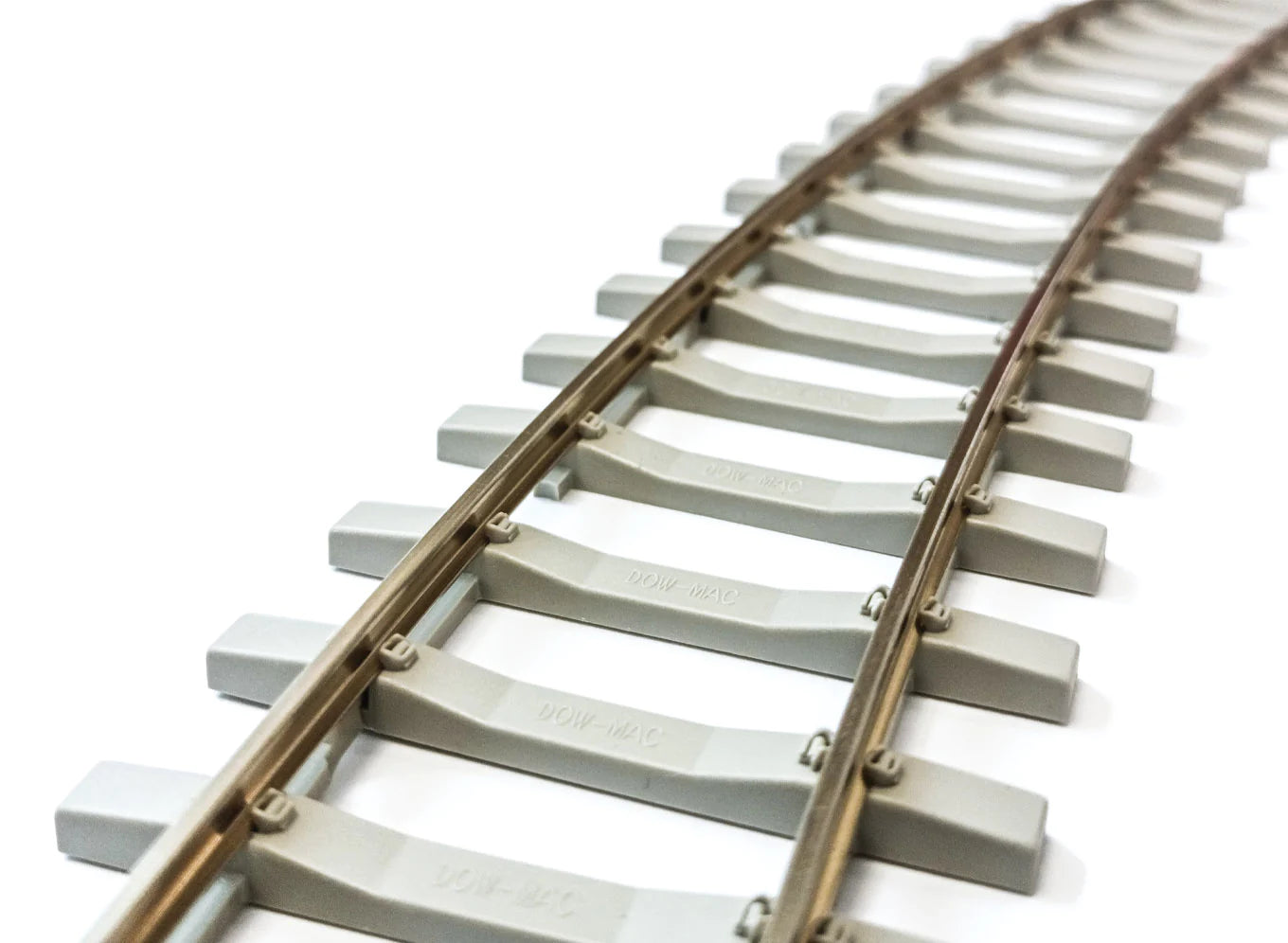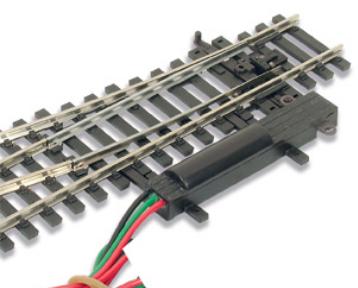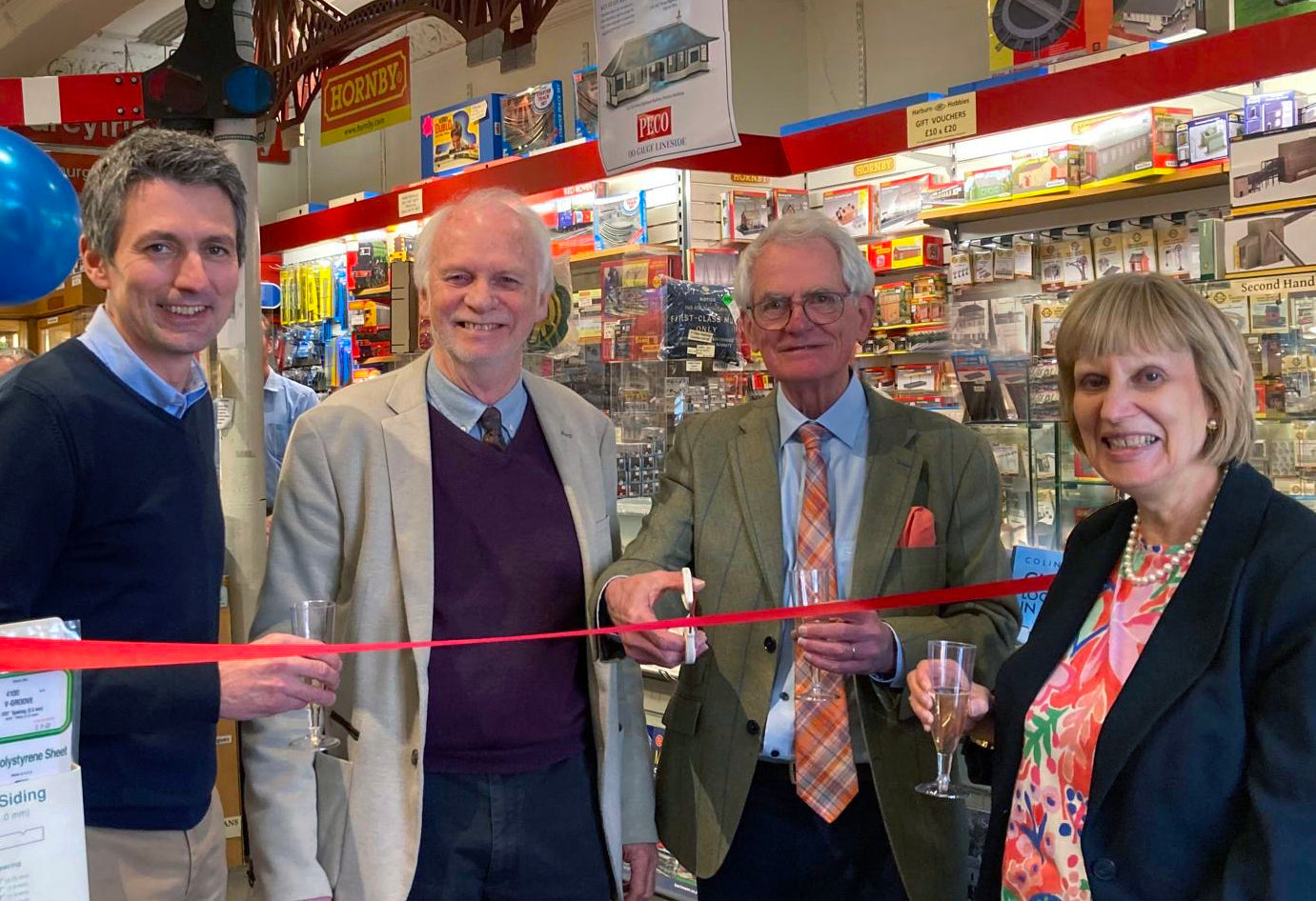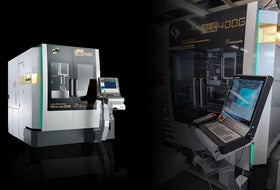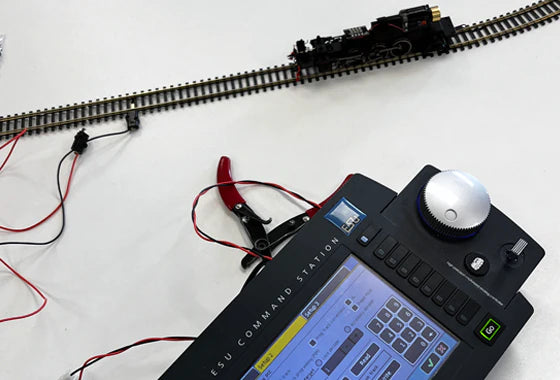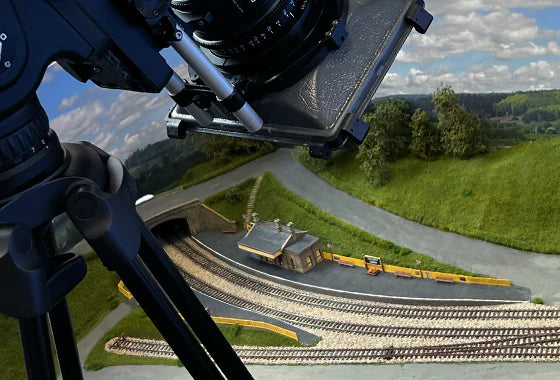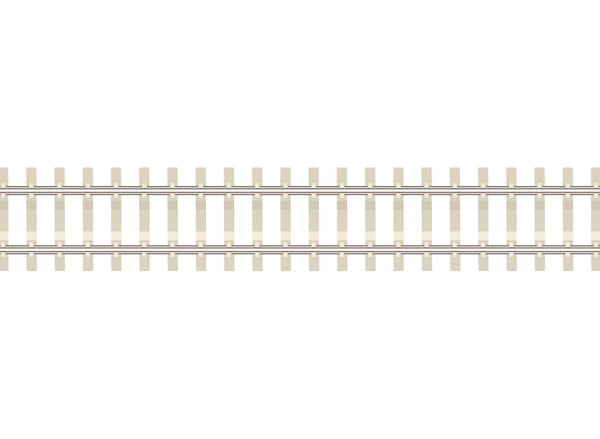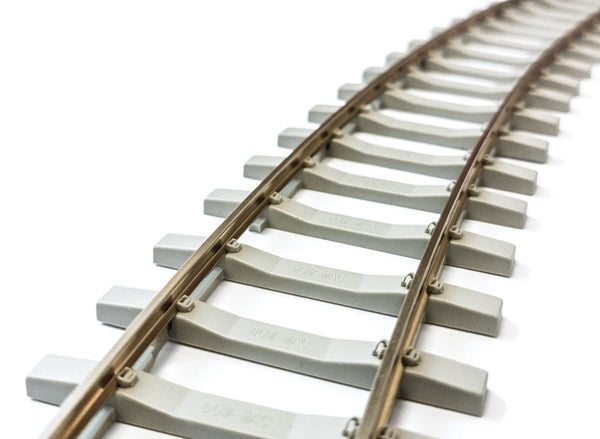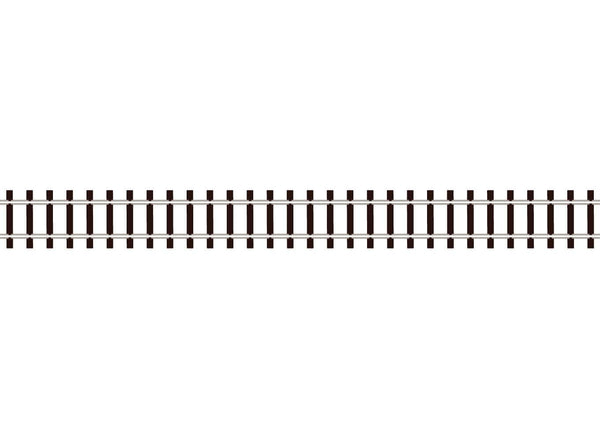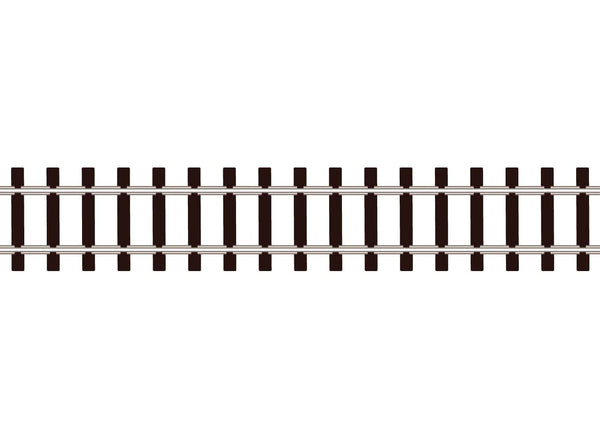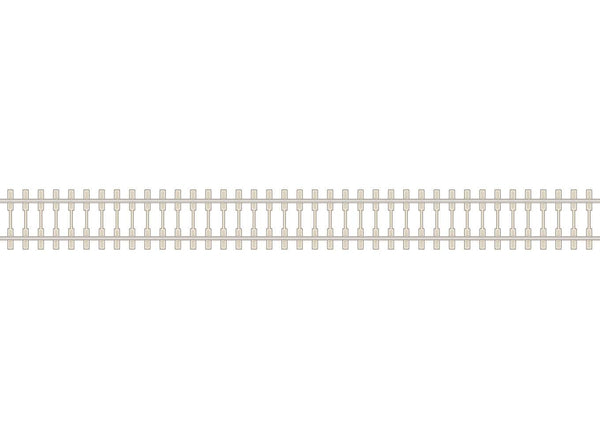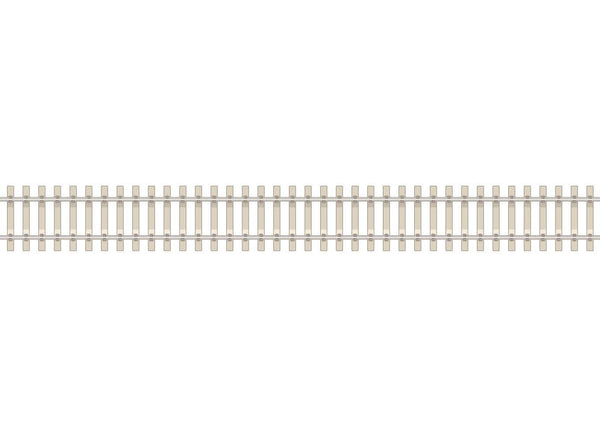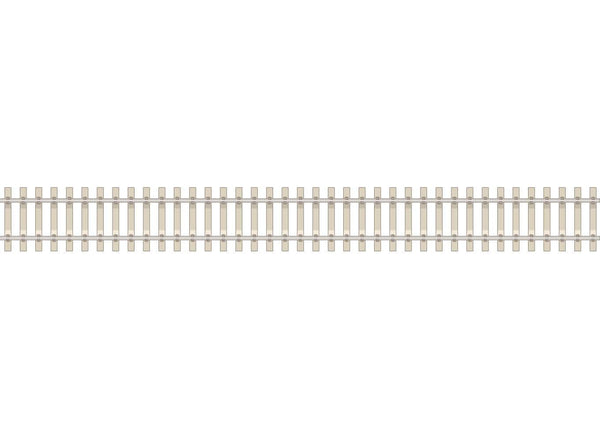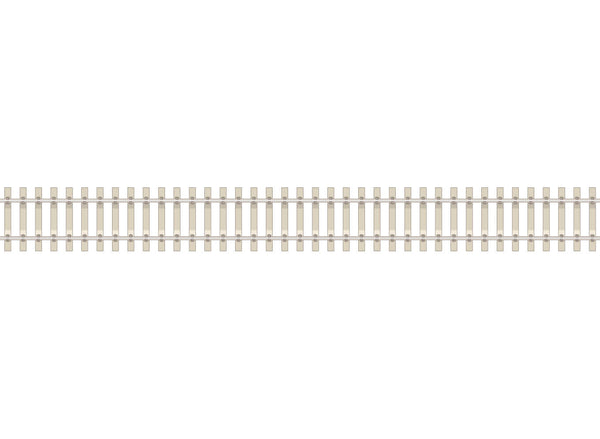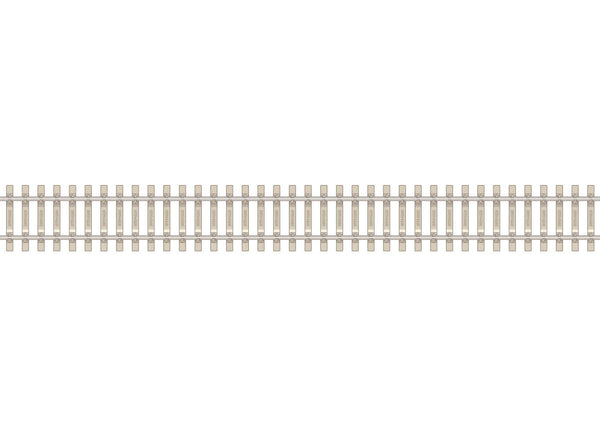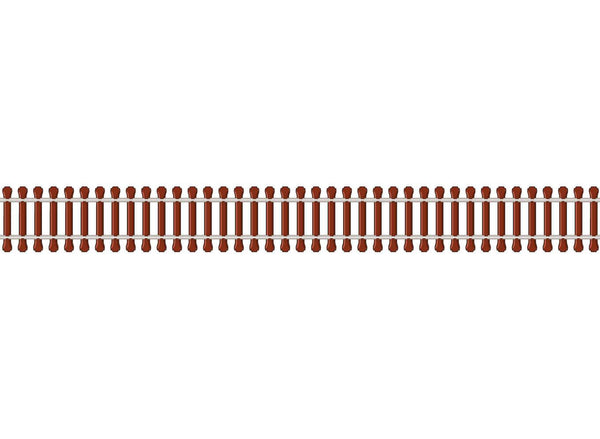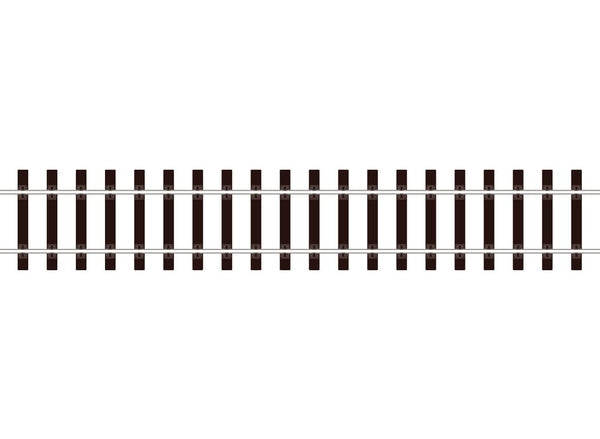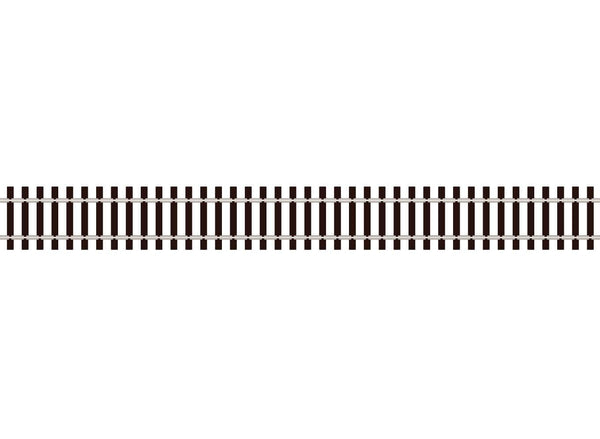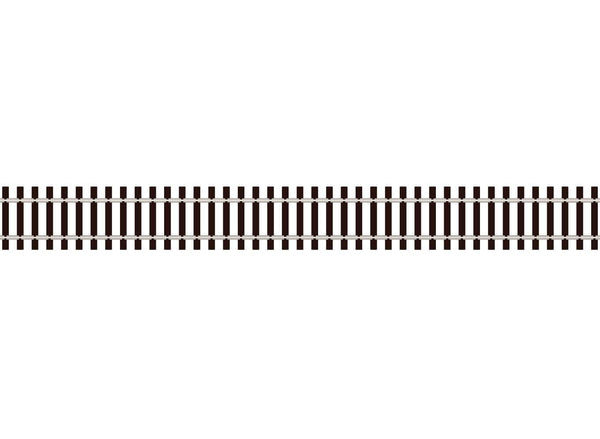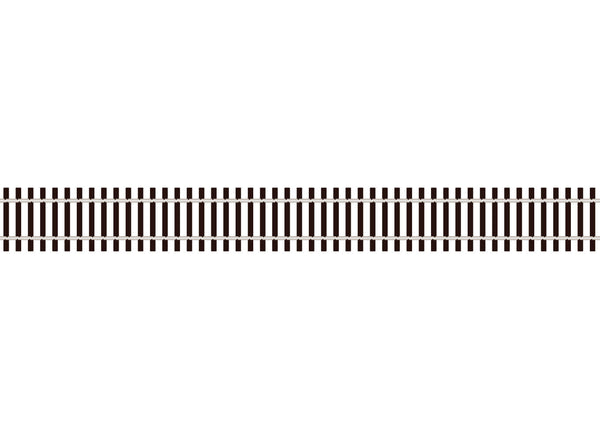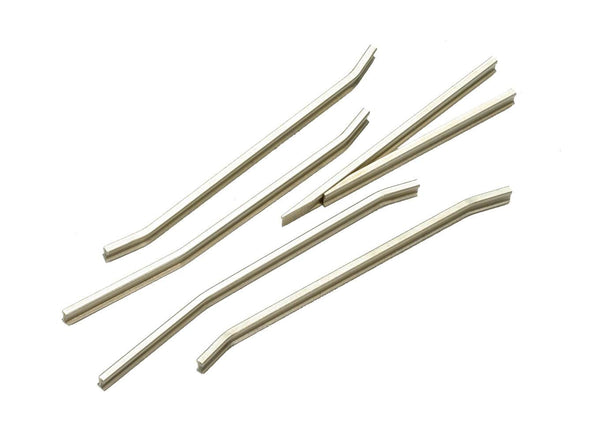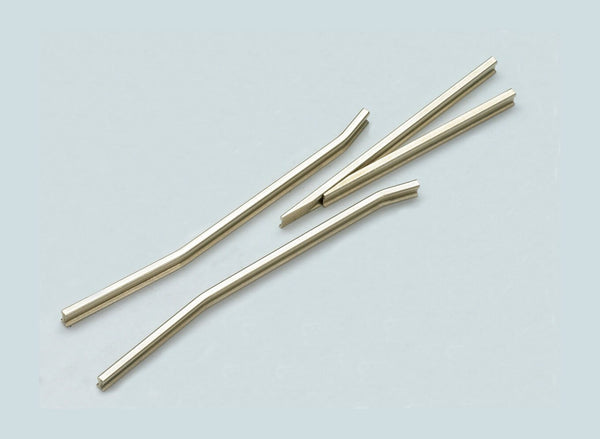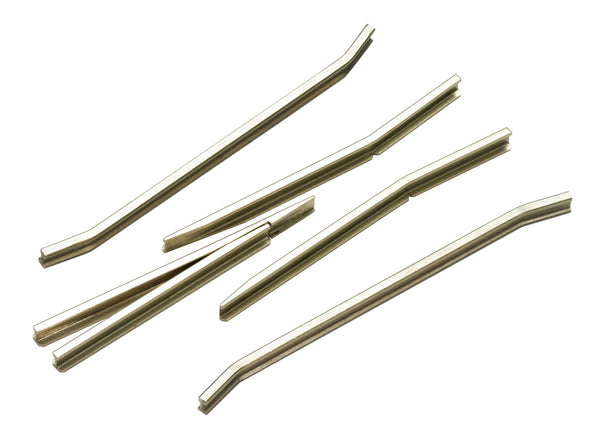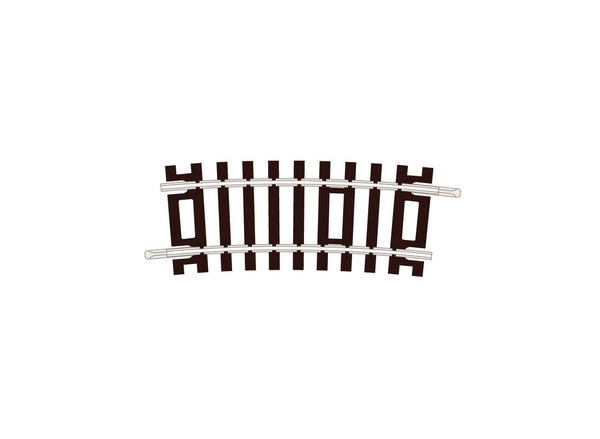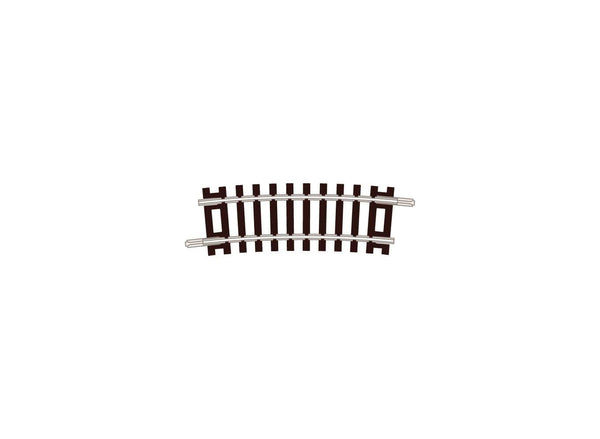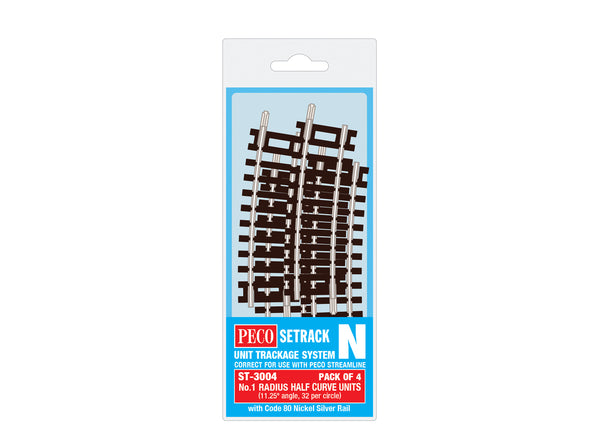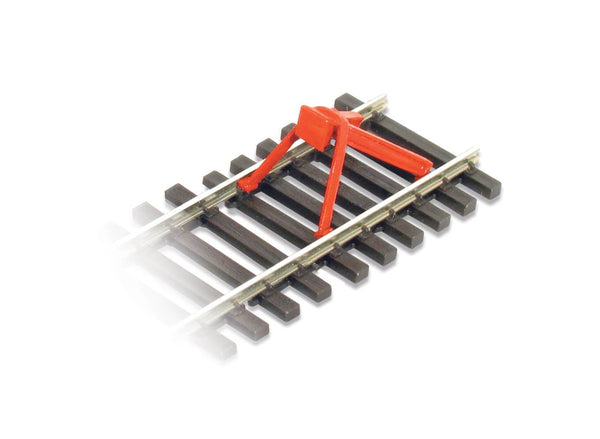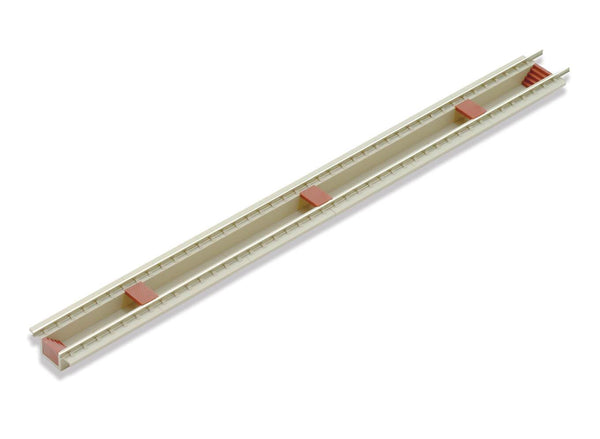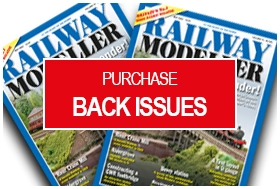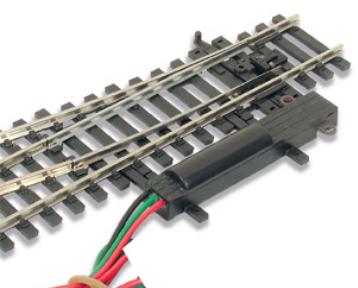BROWSE PECO PRODUCTS
Browse through our complete product portfolio.
354 Products Found
Flexible Track with Concrete Sleeper
This track models the most common form of concrete sleepering in use in Britain today, with flat bottom rail. PECO Streamline N Gauge Code 55 - Universal Fine trackage system
Despite a low visible rail height of just 1.4mm, all brands of N Gauge model locomotives will run on this track.
The ingenious rail section of PECO 55 combines strength and durability with a highly realistic appearance and uses the same universal rail joiners as Code 80. This track models the most common form of concrete sleepering in use in Britain today, with flat bottom rail. The geometry of this range has been cleverly designed to make it easy to build convenient, complex and aesthetically pleasing formations. For more details on Electrofrog turnouts, see our Wiring the Layout publications Nos 4 and 21.
Flexible Track with Concrete Sleeper
This track models the most common form of concrete sleepering in use in Britain today, with flat bottom rail. PECO Streamline O Gauge Code 143 - Concrete Flexible Track.
SL-702FB PECO Streamline O Code 143 Flexible Track & Concrete SleeperTie
Flat bottom rail, 914mm, 3ft length / Nickel silver rail
View the film here: 
Flexible Track with Wooden Sleeper
Z Gauge Code 60 - Small Scale Flexible Track
With a gauge of just 6.5mm and a model scale of 1.5mm/1ft, this is currently the smallest practical size for building a working model railway. If you want to model big landscapes where the trains are dwarfed by the scenery and yet keep it to a manageable size, Z gauge could be the answer.
Flexible Track with Wooden Sleeper
PECO Streamline N Gauge Code 55 - Universal Fine trackage system
Despite a low visible rail height of just 1.4mm, all brands of N Gauge model locomotives will run on this track.
The ingenious rail section of PECO 55 combines strength and durability with a highly realistic appearance and uses the same universal rail joiners as Code 80; the geometry of this range has been cleverly designed to make it easy to build convenient, complex and aesthetically pleasing formations. For more details on Electrofrog turnouts, see our Wiring the Layout publications Nos 4 and 21.
Flexible Track, Bibloc Sleeper
Bibloc track is the latest form of concrete sleepering to be seen in Britain and around Europe; the rails being supported on concrete blocks which are kept to gauge by a connecting steel rod which is concealed in the ballast when the track has been laid.
Peco Streamline Code 75 track meets the standards of enthusiasts who prefer to run trains on scale height rail. Today most manufacturers' wheels are suitable for use on Code 75 track but some vintage models may have flanges which are too deep to clear the rail fixings. Code 75 can be easily combined with code 100 track by using the SL-113 Transition Track.
Flexible Track, Concrete Sleeper
Concrete sleeper track has been in use on the railways of Britain since around 1940, usually combined with wooden sleeper turnouts and crossings, and this track is a faithful representation of this design.
If you wish to mix wheel standards on your 00/H0 layout, this is the trackage to choose. Code 100 rail allows flange depths up to 1.6mm which means that both vintage and current stock will run happily together. The wide range of turnouts and crossings in this series includes every type, and the geometry of this range has been cleverly designed to make it easy to build convenient, complex and aesthetically pleasing formations.
Flexible Track, Concrete Sleeper
This track models the most common form of concrete sleepering in use in Britain today, with flat bottom rail and faithfully replicated Pandrol rail fixings.
Peco Streamline Code 75 track meets the standards of enthusiasts who prefer to run trains on scale height rail. Today most manufacturers' wheels are suitable for use on Code 75 track but some vintage models may have flanges which are too deep to clear the rail fixings. Code 75 can be easily combined with code 100 track by using the SL-113 Transition Track.
The wide range of turnouts and crossings in this series includes every type, and the geometry of this range has been cleverly designed to make it easy to build convenient, complex and aesthetically pleasing formations. For more details on Electrofrog turnouts, see our Wiring the Layout publications Nos 4 and 21.
Flexible Track, Concrete Sleeper
83 Line items are realistic models of North American railroad track, with Code 83 nickel silver rail. Scaled from A.R.E.A. drawings and NMRA compliant, Code 83 features authentic tie sizes and spacing, the standard American number system for frog geometry, plus a very fine representation of the rail fixings.
Flexible Track, Concrete Sleeper
Concrete sleeper track has been in use on the railways of Britain since around 1940, usually combined with wooden sleeper turnouts and crossings, and this track is a faithful representation of this design.
If you wish to mix wheel standards on your 00/H0 layout, this is the trackage to choose. Code 100 rail allows flange depths up to 1.6mm which means that both vintage and current stock will run happily together. The wide range of turnouts and crossings in this series includes every type, and the geometry of this range has been cleverly designed to make it easy to build convenient, complex and aesthetically pleasing formations.
Flexible Track, Steel Sleeper
Steel sleeper track is not a recent innovation, having been introduced in the late 19th Century. It proved particularly useful in places such as India and Africa where wooden sleepers could be attacked by termites. Our model is of the modern style, which was brought into use here in Britain in the late 1980's, and features flat bottom rail with Pandrol fixings.
Peco Streamline Code 75 track meets the standards of enthusiasts who prefer to run trains on scale height rail. Today most manufacturers' wheels are suitable for use on Code 75 track but some vintage models may have flanges which are too deep to clear the rail fixings. Code 75 can be easily combined with code 100 track by using the SL-113 Transition Track.
The wide range of turnouts and crossings in this series includes every type, and the geometry of this range has been cleverly designed to make it easy to build convenient, complex and aesthetically pleasing formations. For more details on Electrofrog turnouts, see our Wiring the Layout publications Nos 4 and 21.
Flexible Track, Wooden Sleeper
Gauge One models are built to a scale of 10mm/foot, or approx 1:30 scale. This is a great scale for live steam locomotives, or electric and internal combustion models. This scale is often used in the great outdoors, however, indoor scenic layouts are not unknown.
Flexible Track, Wooden Sleeper
If you wish to mix wheel standards on your 00/H0 layout, this is the trackage to choose. Code 100 rail allows flange depths up to 1.6mm which means that both vintage and current stock will run happily together.
The wide range of turnouts and crossings in this series includes every type, and the geometry of this range has been cleverly designed to make it easy to build convenient, complex and aesthetically pleasing formations. Layout plans suggestions can be found in our publications ‘Track Plans for Layouts to Suit all Locations’ (Ref PM-202), ‘60 Plans for Small Railways’ (Ref no PB-3), and ‘Track Plans for Various Locations’ (Ref no PB-66).
Flexible Track, Wooden Sleeper
Peco Streamline Code 75 track meets the standards of enthusiasts who prefer to run trains on scale height rail. Today most manufacturers' wheels are suitable for use on Code 75 track but some vintage models may have flanges which are too deep to clear the rail fixings. Code 75 can be easily combined with code 100 track by using the SL-113 Transition Track.
The wide range of turnouts and crossings in this series includes every type, and the geometry of this range has been cleverly designed to make it easy to build convenient, complex and aesthetically pleasing formations. Layout plans suggestions can be found in our publications ‘Track Plans for Layouts to Suit all Locations’ (Ref PM-202), ‘60 Plans for Small Railways’ (Ref no PB-3), and ‘Track Plans for Various Locations’ (Ref no PB-66).
For more details on Electrofrog turnouts, see our Wiring the Layout publications Nos 4 and 21.
Flexible Track, Wooden Sleeper
83 Line items are realistic models of North American railroad track, with Code 83 nickel silver rail. Scaled from A.R.E.A. drawings and NMRA compliant, Code 83 features authentic tie sizes and spacing, the standard American number system for frog geometry, plus a very fine representation of traditional rail spike fixings.
Frog and Wing Rails
1 set of Frog and Wing Rails for the construction of turnouts, using Code 124 Bullhead rail.
Frog and Wing Rails
1 set of Frog and Wing Rails for the construction of turnouts, using Code 200 Flat Bottom rail.
Gauge One models are built to a scale of 10mm/foot, or approx 1:30 scale. This is a great scale for live steam locomotives, or electric and internal combustion models. This scale is often used in the great outdoors, however, indoor scenic layouts are not unknown.
Frog, Wing and Check Rails
1 set of Frog and Wing Rails for the construction of turnouts, using Code 143 Flat Bottom rail.
Half Curve, 1st Radius
PECO Setrack 00 Gauge Code 100 - Unit trackage System
The high quality rigid unit trackage system suitable for all popular brands of 00 gauge model trains.
Being fully compatible with the Code 100 PECO Streamline range, it need never be discarded as your layout develops.
The solid nickel silver rails are integrally moulded into the sleeper bases for maximum realism and strength. Turnouts are fitted with an over-centre spring for immediate use, no extra levers necessary.
Half Curve, 1st Radius
PECO Setrack N Gauge Code 80 - Unit trackage System
The high quality rigid unit trackage system suitable for all popular brands of N gauge model trains.
Being fully compatible with both Code 80 and Code 55 PECO Streamline, it need never be discarded as your layout develops.
The solid nickel silver rails are integrally moulded into the sleeper bases for maximum realism and strength. Turnouts are fitted with an over-centre spring for immediate use, no extra levers necessary.
Half Curve, 1st Radius (Pack of 4)
PECO Setrack N Gauge Code 80 - Unit trackage System
The high quality rigid unit trackage system suitable for all popular brands of N gauge model trains.
Being fully compatible with both Code 80 and Code 55 PECO Streamline, it need never be discarded as your layout develops.
The solid nickel silver rails are integrally moulded into the sleeper bases for maximum realism and strength. Turnouts are fitted with an over-centre spring for immediate use, no extra levers necessary.
Half Curve, 2nd Radius
PECO Setrack 00 Gauge Code 100 - Unit trackage System
The high quality rigid unit trackage system suitable for all popular brands of 00 gauge model trains.
Being fully compatible with the Code 100 PECO Streamline range, it need never be discarded as your layout develops.
The solid nickel silver rails are integrally moulded into the sleeper bases for maximum realism and strength. Turnouts are fitted with an over-centre spring for immediate use, no extra levers necessary.
Hayes Bumper
Typical American style buffer with central buffing plate, clips between the rails.
Inspection Pit
Kit includes 6 pit mouldings (total length 297mm), 2 pairs of steps and 4 walkway plates. The modular design makes it easy to assemble pits of any length. With several kits you can model the train length pits seen at many maintenance depots; a great addition to the LK-80 Modern Train Shed unit or create a modern diesel/EMU servicing shed using the Wills SSM300 Modern Industrial Building and SSM315 Extension kits.
Insulated Rail Joiner
Designed to be used with our 00/H0 Code 100 track systems (Ref nos. SL-100 and 102); also with 0 Gauge Bullhead (SL-700BH) and 0-16.5/0n30 (SL-500) track systems.
Design prevents adjacent rails from touching whilst holding them in alignment. Insulated rail joiners are required to provide electrical breaks where Electrofrog turnouts are used, for more details see our Wiring the Layout publications Nos 4 and 21.
